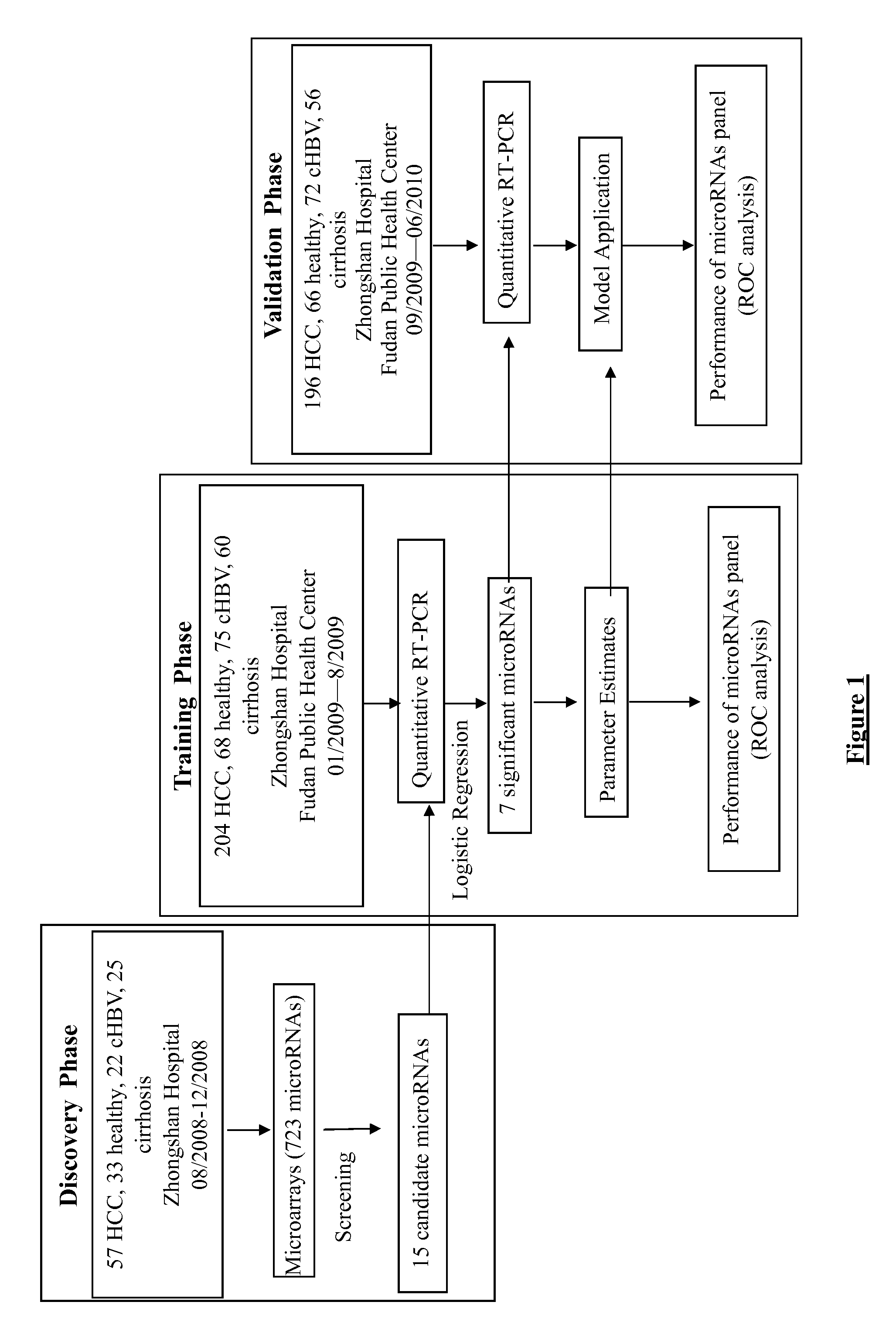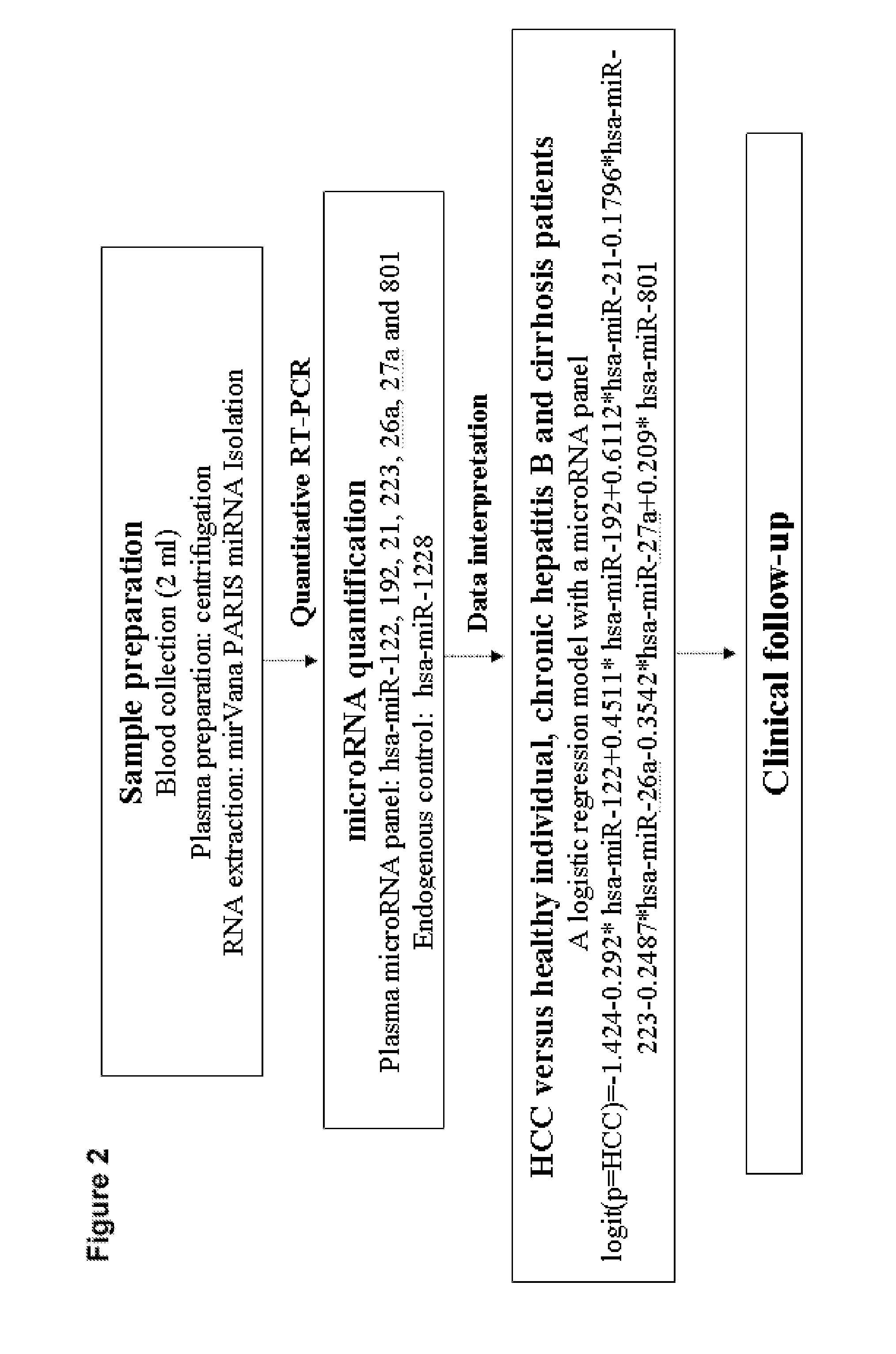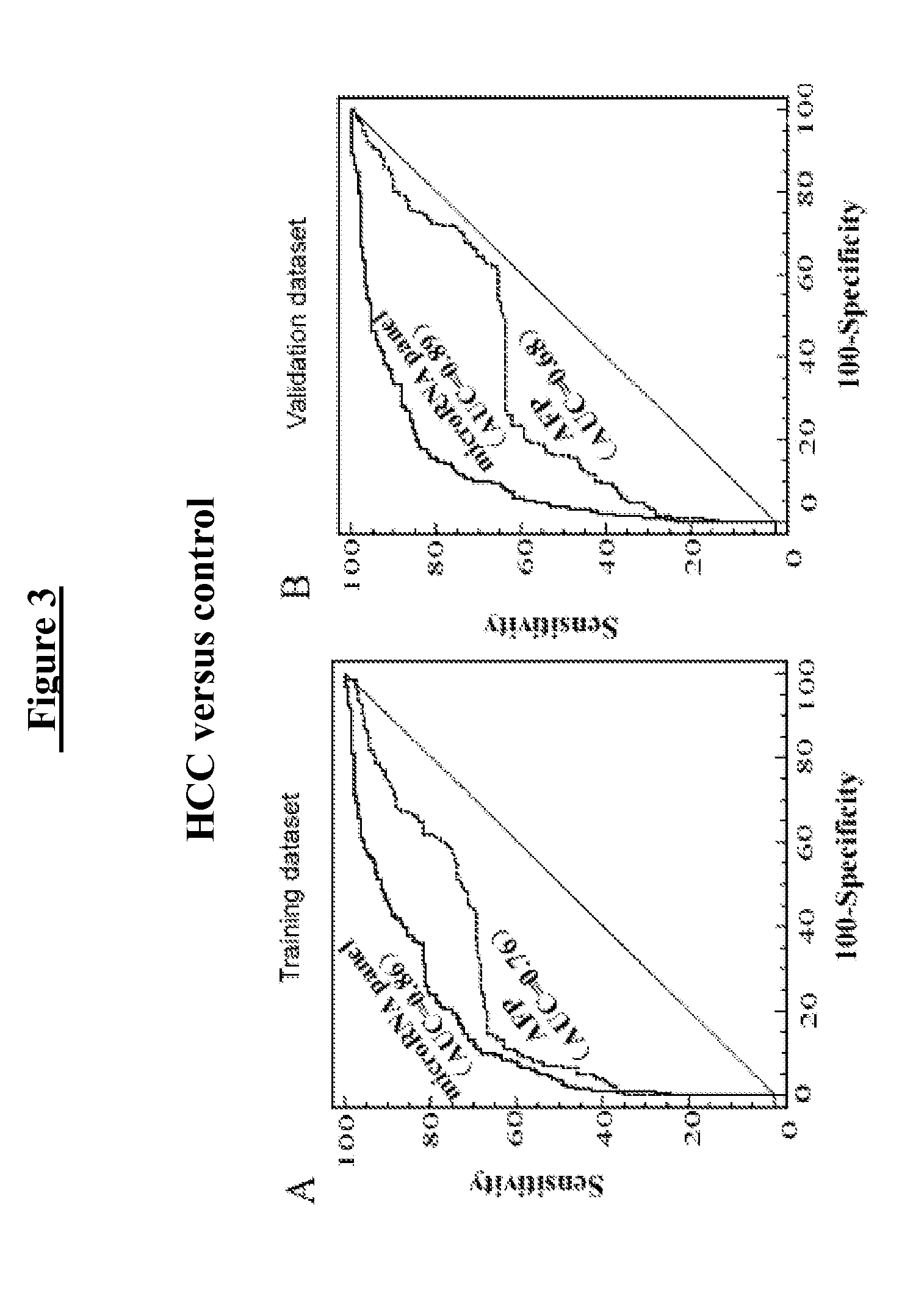Marker consisting of plasma microrna and a new method for diagnosis of hepatocellular carcinoma
a hepatocellular carcinoma and plasma microrna technology, applied in the direction of instruments, nucleotide libraries, biochemistry apparatus and processes, etc., can solve the problems of high frequency of metastasis/recurrence in patients resected, and the majority of tumors are still not detected early in tumor progression, and the survival rate is only 30%-40% of the year
- Summary
- Abstract
- Description
- Claims
- Application Information
AI Technical Summary
Benefits of technology
Problems solved by technology
Method used
Image
Examples
example 1
Plasma Sample Collection and Preparation
[0161]The study in the invention was approved by the local ethics committee and informed consent was obtained from all patients. The study design in the invention for the discovery, training and validation phases of the microRNA biomarkers is shown in FIG. 1. The principal method steps for identifying a patient in a blood sample using the proposed plasma microRNA panel exhibiting hepatocellular carcinoma are shown in FIG. 2.
[0162]934 blood samples, who met the eligible criteria (Table 2), were prospectively collected from Shanghai Zhongshan Hospital and Public Health Center between August 2008 and June 2010. These samples were obtained from 167 healthy donors (healthy group), 169 chronic hepatitis B patients (CHB group), 141 post HBV infection liver cirrhosis patients (cirrhosis group) and 457 HBV-infection related HCC patients (HCC group). The samples were allocated into 3 phases of the study in chronological order (FIG. 1). The clinical char...
example 2
microRNA Microarray Analysis
[0165]A qualitative analysis of the microRNA (differentially) expressed in a particular plasma sample may optionally be performed using the Agilent microRNA microarray platform (Agilent Technologies, Santa Clara, Calif., USA). The microarray contains probes for 723 human microRNAs from the Sanger database v.10.1. Total RNA (100 ng) derived from each of 137 plasma samples were used as inputs for labeling via single-color Cy3 incorporation. Microarray slides were scanned by XDR Scan (PMT100, PMTS). The labeling and hybridization were performed according to the protocols in the Agilent microRNA microarray system. The microarray image information was converted into spot intensity values using Feature Extraction Software Rev. 9.5.3 (Agilent Technologies, Santa Clara, Calif.). The signals after background subtraction were normalized by a stable endogenous control hsa-miR-1228. After that, a log transform with base 2 was performed. A sample that showed intra-arr...
example 3
The Microarray Data on 137 Samples
[0168]The expression profiles on the microarray analysis of 15 candidate microRNAs for further validation are shown in Table 5. The microRNA met the selection criteria is shown in bold.
TABLE 5Expression profiles of 15 candidate microRNAs on microarraysHCC versus control#HCC versus healthyHCC versus CHBHCC versus cirrhosisFoldFoldFoldFoldp valuechangep valuechangep valuechangep valuechangehsa-miR-1221.6E−100.31.7E−033.39.0E−090.18.8E−021.9hsa-miR-8012.8E−044.71.7E−032.44.0E−029.22.5E−049.1hsa-miR-1942.7E−080.22.7E−036.76.5E−070.19.8E−036.6hsa-miR-2234.1E−090.27.1E−030.55.8E−090.23.9E−060.2hsa-miR-217.6E−050.91.2E−022.02.8E−040.55.5E−011.2hsa-miR-23b9.4E−080.24.7E−023.99.9E−080.17.2E−010.8hsa-miR-1922.7E−070.55.0E−022.99.7E−070.21.9E−024.6hsa-miR-1012.7E−080.38.7E−010.95.8E−090.13.0E−021.4hsa-miR-122*1.9E−080.021.7E−012.65.8E−090.0079.4E−010.7hsa-miR-19a3.5E−080.48.2E−010.85.8E−090.22.7E−022.6hsa-miR-19b8.4E−090.48.9E−010.95.8E−090.26.8E−032.0hsa-miR-...
PUM
| Property | Measurement | Unit |
|---|---|---|
| Temperature | aaaaa | aaaaa |
| Volume | aaaaa | aaaaa |
| Volume | aaaaa | aaaaa |
Abstract
Description
Claims
Application Information
 Login to View More
Login to View More - R&D
- Intellectual Property
- Life Sciences
- Materials
- Tech Scout
- Unparalleled Data Quality
- Higher Quality Content
- 60% Fewer Hallucinations
Browse by: Latest US Patents, China's latest patents, Technical Efficacy Thesaurus, Application Domain, Technology Topic, Popular Technical Reports.
© 2025 PatSnap. All rights reserved.Legal|Privacy policy|Modern Slavery Act Transparency Statement|Sitemap|About US| Contact US: help@patsnap.com



